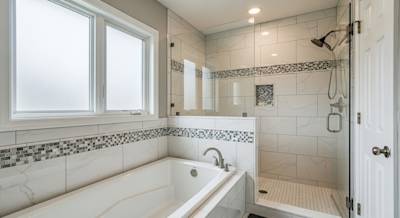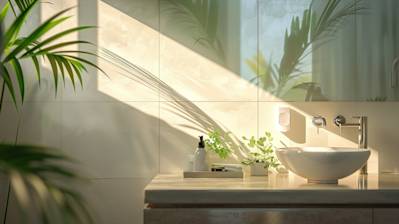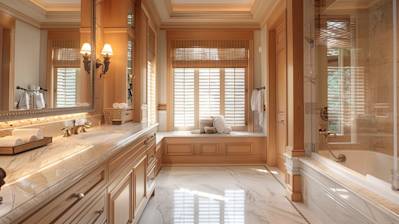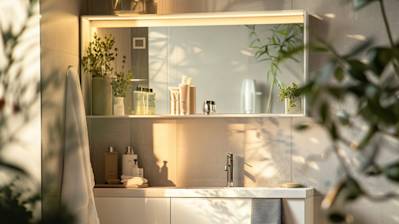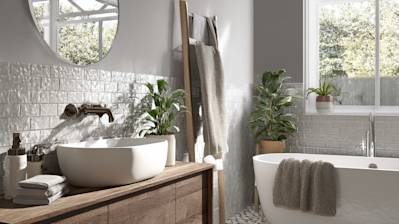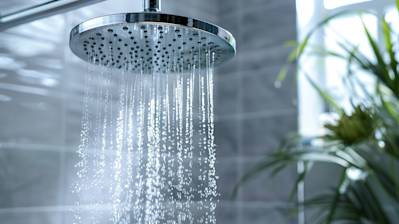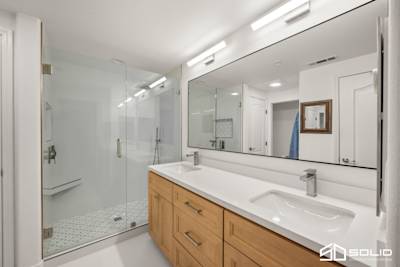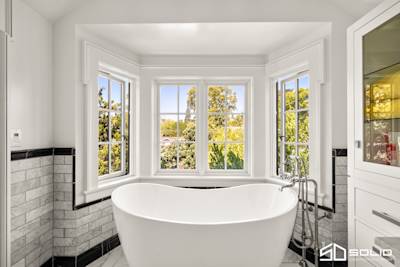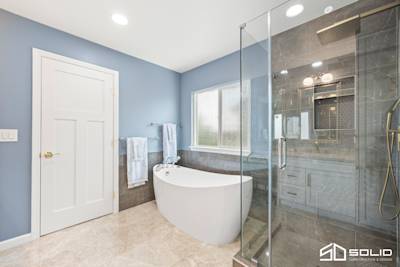Every once in a while, you might feel the urge to modify certain aspects of your home to give it a fresher feel. One area that often gets overlooked in this respect is your bathroom. More specifically, you might be looking to convert your shower to a tub. Doing so can transform your bathroom, adding a touch of class and luxury while also proving to be very functional. This blog post will detail everything you need to know about making this transformation.
Why Convert Your Shower to a Tub?
Many homeowners are looking to convert their shower to a tub for a variety of reasons. Here are a few that might resonate with you:
Increased Home Value: A beautiful bathroom with a tub is a desirable feature for many potential home buyers. The perception of luxury that a bathtub provides can significantly enhance your home's market value.
Added Relaxation: Imagine coming home after a long day of work and soaking in your own personal spa. A tub has therapeutic benefits that a shower simply can't offer.
Safety for Kids and Seniors: Bathtubs can be safer than showers, especially for small children or the elderly.
Preparations Before Conversion
Before setting out to convert your shower to a tub, you need to take into account certain considerations to ensure the project progresses smoothly:
Regarding the Space
- Measure the bathroom's space, particularly the shower area's dimensions.
- Ensure there's enough room to move around the bathroom once the tub gets installed.
Regarding the Budget
- Define your budget for this project.
- Consider the costs of the chosen bathtub, installation charges, any adjustments in plumbing, and additional expenses for new fittings or fixtures.
The Conversion Process
Let's dive into the actual steps involved in converting your shower to a tub:
Step 1: Removing the Existing Shower
- Disconnect any shower-related plumbing.
- Dismantle the shower unit, including the enclosure, tray, and mixer unit.
- Be careful not to damage any surrounding tiles or elements during the process.
Step 2: Plumbing Adjustments
- Identify the drain and supply line locations for your new tub.
- Adjust plumbing accordingly, ensuring the water supply is properly linked to the bathtub unit.
Step 3: Installing the Tub
- Install the tub according to the manufacturer's instructions.
- Reconnect plumbing, including the faucet and drain, to the bathtub.
- Make sure the tub is securely fastened and all plumbing connections are secure and leak-proof.
Step 4: Finishing Touches
- Install any additional fixtures or fittings for the tub.
- Check and ensure there are no leaks from the tub.
- Restore the bathroom decor, replacing any damaged tiles and ensuring a clean, neat finish.
Tips to Choose the Right Bathtub
Yet a vital aspect of this conversion is choosing the right bathtub. Here are some points to guide you:
Assess the available space: Bathtubs come in various sizes. Ensure that the one you choose fits into the allotted space without making the bathroom feel crowded.
Consider the material: Bathtubs are made from materials such as acrylic, fiberglass, cast iron, and more. Each material has its pros and cons, so choose one that fits your needs and budget.
Decide on the style: From freestanding bathtubs to built-in or corner bathtubs, there are many styles to choose from. Make sure the style complements your existing bathroom decor.
Conclusion
Transforming your bathroom by converting your shower to a tub can seem like a daunting task, but with proper planning and the right professionals, you can easily accomplish this. Not only does it enhance the visual appeal of your bathroom, but it also adds to your home's value and provides an oasis of relaxation at home. So, what are you waiting for? Start planning your bathroom revamp today!
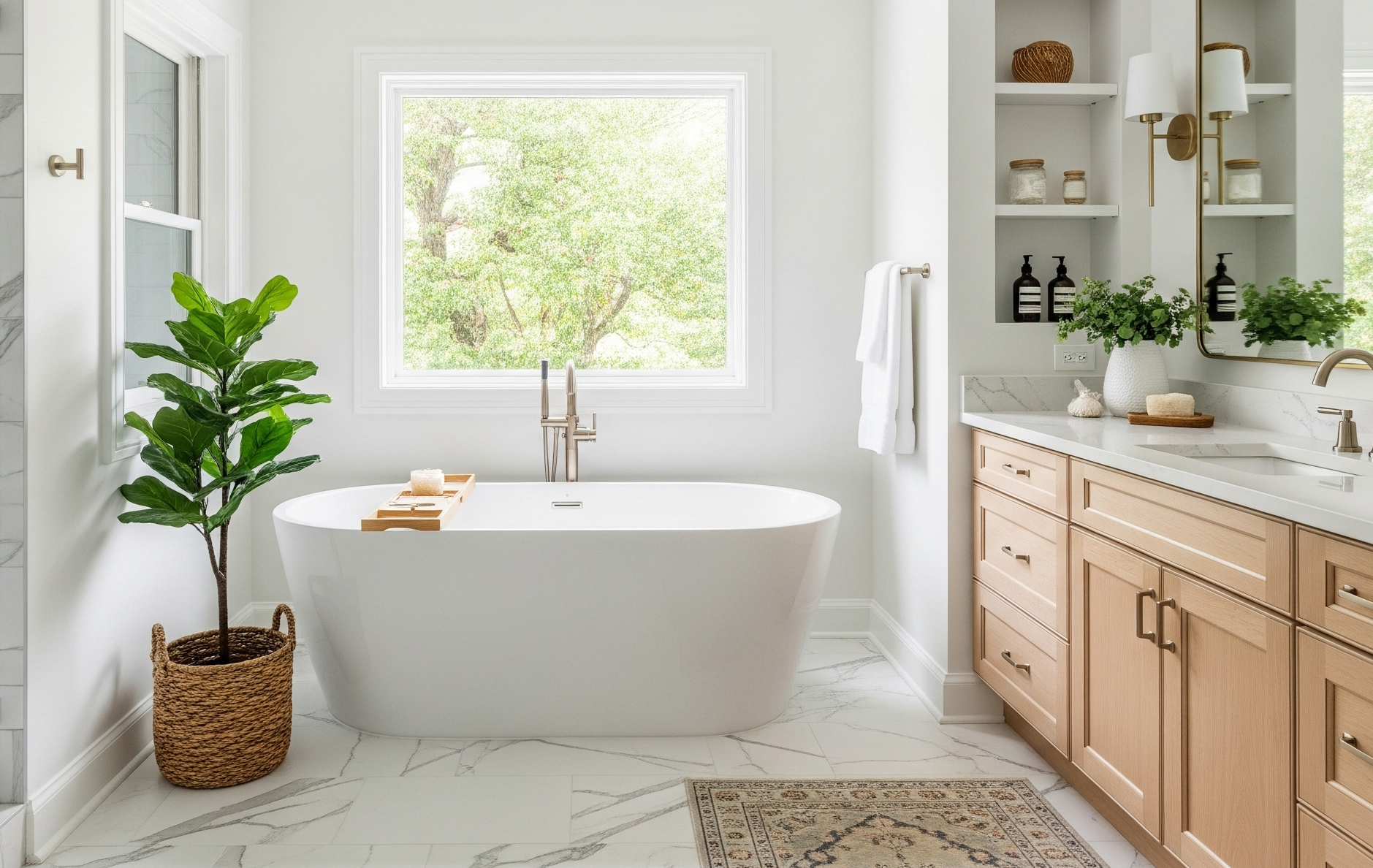
Frequently Asked Questions about Convert Shower To Tub
How much will it cost to convert my shower into a tub?
The cost of converting a shower into a tub depends on several factors like the type of tub you are looking to install, the need for new plumbing, the state of your current bathroom structure, and labor costs. On average, you can expect to spend anywhere from $1,500 to $5,000, but prices can vary. It’s always best to obtain several quotes from reputable contractors before making a decision.
How long does the shower to tub conversion process take?
The process can take anywhere from one day to a week or more depending on the complexity of the project. Basic conversions can be relatively quick while more extensive jobs may take longer. If plumbing needs to be moved or if structural changes are necessary, the project timeline will likely be extended.
What type of tub can I install in my shower space?
There are numerous options to choose from when converting a shower to a tub, including soaking tubs, whirlpool tubs, freestanding tubs, and walk-in tubs. Your choice will depend on your needs, style preferences, and the size of your bathroom. Consultation with a bathroom remodeling expert can be beneficial to assist with selecting a tub that's right for you.
What if my bathroom size is small, can I still convert my shower to a tub?
Yes, you can still convert your shower into a tub even if your bathroom is relatively small. There are tubs designed specifically for smaller spaces. Seek guidance from an expert to best utilize the space in your bathroom during the conversion phase.
Do I need a permit to convert my shower to a tub?
Permit requirements can vary considerably based on local codes and regulations. It’s crucial to check with your local county or city building department to understand the necessary permits before making any changes to your bathroom plumbing or structure.
Is the conversion process messy?
While any renovation process involves a degree of mess, professional installers ensure that the impact on your home is minimized and the work area is cleaned up once the job is complete.
Will I experience significant disruption during the conversion process?
Depending on the complexity of the installation, you may experience some inconvenience. However, professionals work efficiently to limit the disruption caused by the conversion process. In most cases, homeowners can still use their bathroom during the conversion period.
Can I do the shower to tub conversion myself?
While a DIY attempt is possible, a shower to tub conversion can be quite complex, involving several skills including plumbing, tiling, carpentry, and often electrical work. Hiring a professional is highly recommended to avoid issues down the line which might lead to costly repairs.
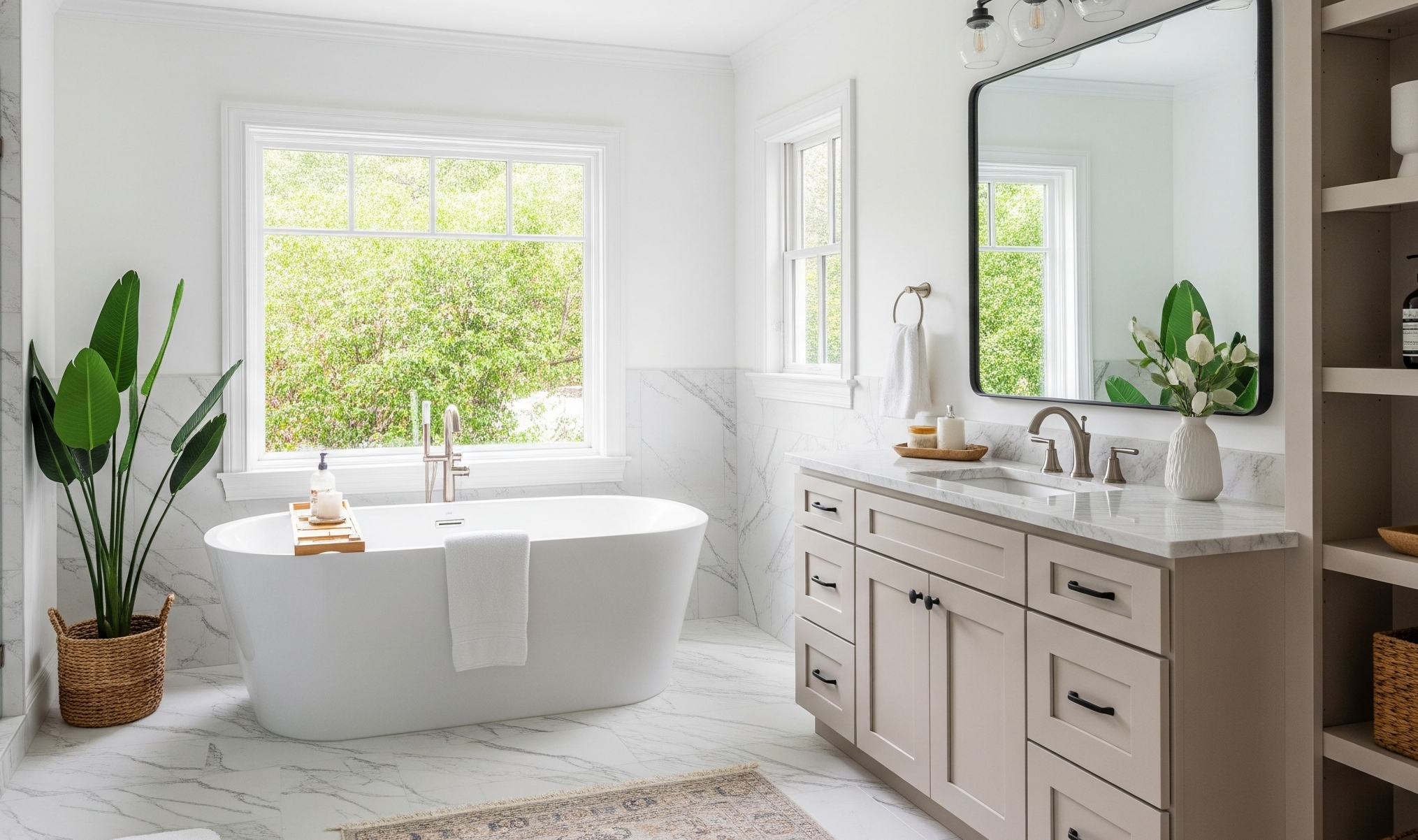
Pros of Converting Shower to Tub
Enhanced Relaxation and Comfort
Tub baths offer a more relaxing and comfort-filled experience than showers. After a tiring day at the office, one can unwind in the quietness of a warm bath. The therapeutic benefits of a tub bath further extend to soothing muscle pains and promoting better sleep. By converting your shower to a tub, you can indulge in this soothing respite anytime without having to leave the comfort of your home.
More Options for Bathing Kids and Pets
A bathtub is deemed more practical for households with young children or furry friends. Kids generally find bathing in a tub more enjoyable and less intimidating compared to a shower. In a similar vein, washing pets in a tub is generally easier and less chaotic than trying to get them to stand still under a shower. Thus, switching from a shower to a tub could make bath times more pleasant and less onerous.
Increased Resale Value
A well-placed, quality bathtub can boost the resale value of your home. Many potential home buyers, especially families with small children, might prefer a home with at least one bathtub. Consequently, the relatively small investment made in converting your shower into a tub could reap bigger returns in the future.
Aesthetically Pleasing
Bathtubs, especially freestanding ones, often serve as the focal point in a bathroom and can imbue it with an air of luxury. Bathtub designs and materials range from minimalist acrylic or fiberglass styles to more opulent copper or cast-iron variants. Converting a shower into a tub allows you to make a style statement and customize your bathroom as per your taste and preferences.
Cons of Converting Shower to Tub
Requires More Space
The most glaring drawback of bathtubs is that they are larger than showers, taking up significantly more space in your bathroom. If you have a relatively small bathroom, installing a bathtub may make it feel crammed and reduce room for other features.
More Water Usage
Bathtubs generally use more water than showers. An average bathtub holds about 42 gallons of water, whereas an efficient showerhead delivers 2 gallons of water a minute. Therefore, a 10-minute shower uses approximately 20 gallons of water, considerably less than a full tub bath. Consequently, frequent tub users might witness an unwelcome surge in their water bill.
Safety Concerns
For individuals with mobility issues, stepping into and out of a tub might prove to be a fall hazard. Showers, particularly curbless or walk-in models, are safer and more accessible for people with limited mobility, including the elderly and those with physical impairments.
Lengthy Installation Process
The process of replacing a shower with a tub can be a drawn-out one, possibly leading to prolonged bathroom downtime. Additionally, the plumbing needs may be more complex and pricey compared to a standard shower installation.
Higher Maintenance
Bathtubs generally require more intensive and frequent cleaning than showers because residue and dirt can more easily accumulate on their surfaces. This can be bothersome and time-consuming for individuals who lead particularly busy lives.
Less Environmentally Friendly
Showers are seen as more environmentally friendly because they use less water. As a result, the shift towards a more environment-conscious society may make bathtubs less appealing to some who are concerned with conserving water resources. Moreover, a larger volume of heated water translates to higher energy expenditure for bathtub users, producing a larger carbon footprint.
Costly
A bathtub, especially a high-end model, can be quite expensive. The cost of the bathtub itself coupled with the installation expenses can make this change a costly venture. This doesn't even factor in the potential increase in water and heating costs that come with using a bathtub. Therefore, a thorough cost-benefit analysis would be warranted before taking this step.
Misconceptions About Converting Showers to Tubs
You Can Do It Yourself Easily
One of the most common myths about converting a shower to a tub is that it can be easily done without professional assistance. People believe that they could save money by DIY-ing the project. Although it's tempting to think that converting a shower to a tub is merely a straightforward, intuitive process, it often requires expertise to deal with plumbing, tiling or any structural changes needed during the conversion. Missteps could lead to costly mistakes, damages, and even safety issues.
Converting a Shower to a Tub is Always a Good Idea
This is another myth that needs to be busted. In some homes, depending on the layout and usage, converting a shower to a tub may not be the best route. A stand-up shower is more accessible and safer for people with mobility issues. It is also a more efficient use of space in smaller bathrooms. Before deciding to convert, always consider the home’s inhabitants and their needs, as well as the size and layout of the bathroom.
All Showers Can Be Converted to Tubs
Another common misconception is that any shower can be converted into a tub. The reality is that certain factors limit the possibility of conversion. The size and layout of the shower, as well as the plumbing configuration, can all present challenges. Some showers are simply not sufficiently spacious to accommodate a standard tub.
It's the Same as Installing a New Tub
This couldn't be further from the truth. In many cases, converting a shower into a tub is more labour-intensive and time-consuming than simply installing a new tub. This is because the process involves undoing the previous installation, reconfiguring plumbing, and possibly altering the room's layout, before actually installing the new tub. Hence, the task requires proper planning and execution.
Converting a Shower to a Tub Increases Property Value
While it's true that a well-executed bathroom remodel may increase the overall value of your property, making the change purely for this purpose is a fairly risky strategy. Potential buyers might prefer a shower over a tub for a variety of reasons, including ease of use, space constraints, or accessibility issues. The impact on property value varies significantly depending on your prospective buyers’ preferences and the current trends in bathroom design.
Everything Can Be Completed In a Single Day
This misconception often leads to unrealistic expectations. Converting a shower to a tub is a complex process that involves numerous steps including demolishing the existing shower, preparing the area, installing new plumbing, putting in the bathtub, and finishing with tiling or paneling. Depending on the scale and complexity, it could take multiple days or even weeks to complete.
All Tubs Are Same
Tubs come in a wide variety of sizes, shapes, and materials, with different features and requirements. Clawfoot tubs, drop-in tubs, alcove tubs, freestanding tubs, each have their own characteristics and installation needs. Many people underestimate the numerous options and mistakenly believe that they can simply choose any tub and it will fit in their existing shower space.
The Drainage System Doesn’t Need Alteration
It is a common belief that the existing shower drainage system will suffice for the tub. In reality, a tub requires a larger drain than a shower- 1.5 inches for the former versus 2 inches for the latter. In most scenarios, an alteration in the drain system is inevitable, adding to the complexity of the job.
In conclusion, the process of converting a shower to a tub involves several complicated steps that require a clear understanding and professional expertise. It is crucial to dispel these myths and misconceptions to ensure that your shower to tub conversion is done right, safely, and efficiently.
Summary
So now, now you've got the lowdown about the whole "Convert Shower to Tub" process. Making the swap isn't as daunting as you might think, and it can really give your bathroom a fresh new look. Along with the aesthetic upgrade, adding a tub can also boost functionality especially for those with little ones and pets, making bath time a breeze.
Thinking of changing up your bathroom? "Convert Shower to Tub" can be a great start. Not only does it make life easier for families with kids, but it also adds value to your home. Just remember that it's important to hire professionals for the job to ensure a safe and correct installation.
With the right planning and professional help, the "Convert Shower to Tub" process can be done with minimal disruption. You'll soon be enjoying a relaxing bath in your new tub. After all, who doesn't like upgrading their home from time to time and getting a mini-spa treatment right in their bathroom?
About Solid Construction & Design
Solid Construction & Design is a family-owned and operated business proudly based in Sacramento, CA. We are a one-stop-shop for all your home construction, renovation, and design needs. With decades of experience under our belt, we approach every project with a commitment to produce beautiful, custom-tailored solutions. Our extensive range of services includes everything from kitchen and bathroom remodels to full-scale home renovations. At Solid Construction & Design, we pride ourselves on delivering high-quality craftsmanship, upfront pricing, and an unbeatable attention to detail. We're here to help you create the home of your dreams, every step of the way.


